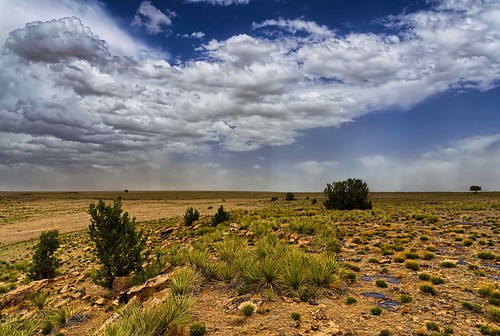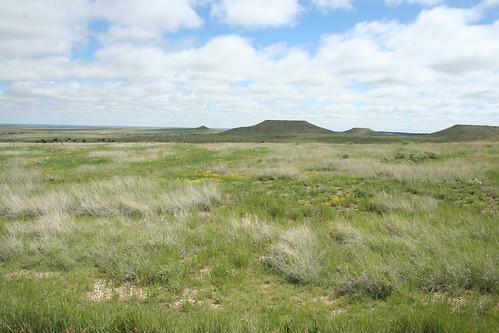
By keeping their grasslands intact, two Colorado ranches are reducing greenhouse gas emissions and protecting vital wildlife habitat, all while earning additional revenue.
It may seem too good to be true, but it is thanks to a unique partnership spearheaded by the Climate Action Reserve, one of North America’s leading carbon offset project registries.
With the help of a Conservation Innovation Grant (CIG) from USDA’s Natural Resources Conservation Service (NRCS), the Climate Action Reserve listed Raven’s Nest and Heartland Ranch, both owned by the Southern Plains Land Trust (SPLT), as the first two grassland offset projects developed and executed under a new Grassland Project Protocol.
North American grasslands have tremendous potential for storing carbon in healthy soils and biomass, providing a climate-smart conservation solution that halts greenhouse gas emissions.
When grasslands are tilled and converted to croplands, they release large amounts of carbon dioxide into the atmosphere. Carbon dioxide is one of the leading greenhouse gases contributing to global climate change. By not converting their grasslands to cropland, farmers can earn offset credits that can be sold in a carbon market. Under this arrangement, the lands remain working lands and can be grazed as prescribed by a grazing management plan, and the grassland can even be enhanced with additional conservation practices. The only prohibition is that the grasslands cannot be tilled, which would release the carbon stored in the soil.

NRCS is a federal leader in supporting the development of environmental markets, largely through its CIG program.
“Through the CIG program, NRCS leverages environmental markets to achieve our mission of getting more conservation on the ground,” said NRCS Chief Jason Weller. “This partnership with CAR demonstrates how ranchers can keep ranching and benefit from new revenue streams while ensuring that grasslands provide nesting habitat for wildlife, are more resilient to extreme weather, and reduce carbon emissions to the atmosphere.”
Raven’s Nest and Heartland Ranch, with help from The Climate Trust and the Environmental Defense Fund, will protect more than 15,000 acres of grassland, including 2,100 acres that are under threat of being converted to cropland in southeastern Colorado. These acres will generate offset credits that can be sold by the farmers for revenue in the carbon market, and SPLT can continue earning revenue from ranching on the land as prescribed in their grazing management plan. SPLT has plans to enroll an additional 7,600 acres in 2017.
The Conservation Innovation Grant is supporting the development and third-party verification of the grasslands projects, helping farmers and ranchers navigate the mechanics of engaging in carbon markets.
“Protecting grasslands presents a tremendous opportunity to make ranchers and land owners powerful forces in addressing climate change, and by using the carbon market as a tool to fund the protection, there is a win-win-win situation,” said Craig Ebert, President, Climate Action Reserve. “We are honored to work with SPLT and the EDF on this pioneering initiative and commend SPLT for being a pioneer. We encourage other ranchers and landowners to explore this new opportunity.”
Since 2009, NRCS has awarded more than 400 Conservation Innovation Grants to support innovative conservation approaches and technologies that develop new ways to attract private investment in natural resource conservation and help farmers and ranchers make their operations more resilient to climate change. Find out how farmers and ranchers in North Dakota and rice growers in California and the Mid-South are benefiting from carbon markets and CIG projects.
For the latest selection of Conservation Innovation Grants, view the 2016 award announcement or to find out more about current and past projects, visit Conservation Innovation Grants on the web.

